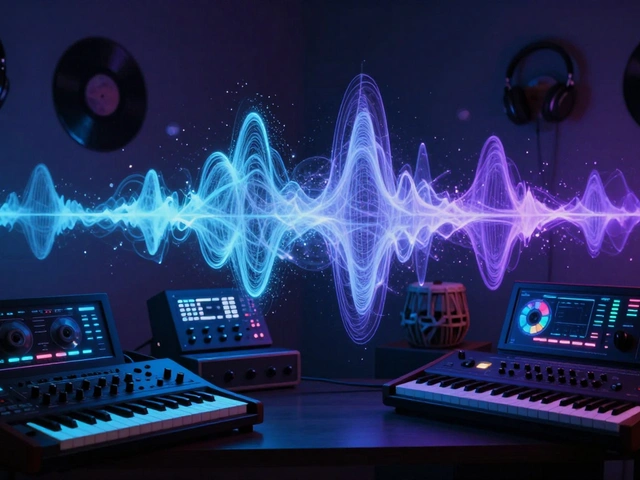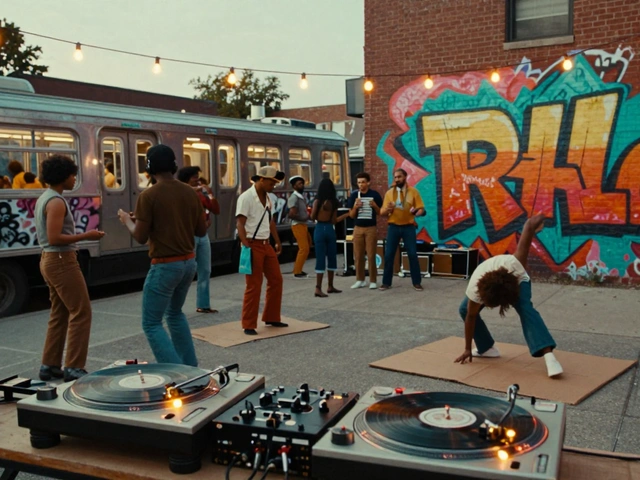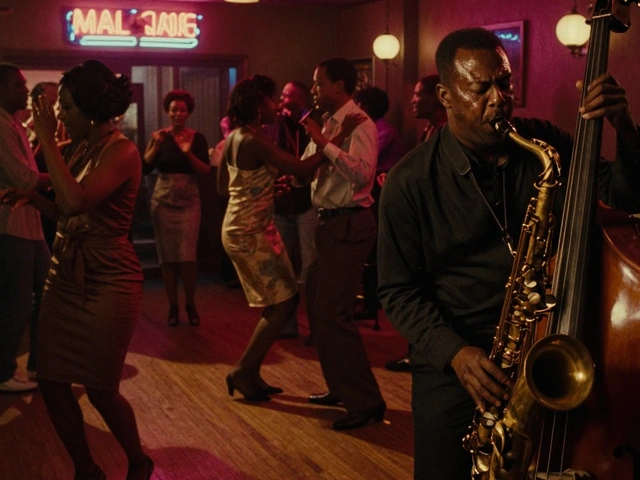Picture this: You open your favorite streaming app in 2025 and stumble upon a chart-topping track featuring a South Korean rapper, a London-based synth-pop duo, and a holographic vocalist straight out of Tokyo. That’s not some far-off fantasy—it’s a total snapshot of pop music’s reality now. Every catchy chorus blaring from our earbuds carries DNA from every corner of the globe. Pop keeps shaking things up, never sitting still, and always ready to push one more boundary the moment you think you’ve got it figured out. But what’s really spinning behind the scenes of that TikTok dance earworm or the stadium anthem echoing through your playlist? The answers are a mix of tech wizardry, fresh talent, nostalgia, and some good old-fashioned rebellion. And the best part—pop music’s evolution is barely slowing down.
From Bubblegum Beats to Bold New Soundscapes
Pop music’s core has always been about blending the familiar with the surprising. Back in the late ‘50s and early ‘60s, pop meant innocent love songs and crooners you’d want your mom to meet. Think of Elvis Presley performing a number that wouldn’t make a nun blush. Fast-forward through the British Invasion, the synth-heavy ‘80s, and the swaggering pop divas of the ‘90s—each era shaped the next, with every new sound borrowing bits and pieces from what came before. But 2025’s pop scene? It’s a sonic blender set to maximum chaos, with artists mixing nostalgia and innovation like it’s a competitive sport.
Musical nostalgia is peaking. Artists like Olivia Rodrigo and The Weeknd are thriving thanks to their throwback nods to Y2K pop-punk and synth-laden ‘80s grooves. But instead of just recycling sounds, new artists are constantly flipping the script. Latin beats—reggaeton, bachata, dembow—fuse with mainstream pop tracks every day. K-pop, once pigeonholed to BTS’s global takeover, now sees new acts like NewJeans and Stray Kids partnering with Western icons on original tracks.
If you want numbers, streaming plays have exploded. Spotify reported in January 2025 that global pop songs with at least one non-English verse have doubled since 2020. It’s not just about English anymore—if you’re singing, rapping, or humming something catchy, you’re in.
Technology isn’t lurking in the background; it’s leading the charge. Producers use AI-assisted hooks and verses, while AIs like Google’s MusicLM tool (launched in 2023 but totally mainstream now) can create surprisingly good tracks from a single line of lyrics or a hummed melody. Some worry about losing the "human touch," but others say AI is just another instrument—like a synthesizer in ‘83 or Auto-Tune in 2005.
| Year | Top Pop Subgenre | # of Global Streams (in billions) |
|---|---|---|
| 2020 | K-pop | 34 |
| 2022 | Latin Pop | 41 |
| 2023 | Synth-Pop Revival | 36 |
| 2025 | Hybrid Multicultural Pop | 51 |
If you want to dig in, try listening to playlists dedicated to global trends. Keep an ear out for the small creative tweaks—sample choices, vocal effects, or unexpected collaborations. That’s where the pop magic happens.
Icons, Innovators, and the Pop Star Recipe
If someone says "pop icon," maybe you picture Madonna’s cone bra, Michael Jackson moonwalking, or Beyoncé headlining Coachella. But in 2025, it’s gone way past big hair and bigger egos. Social media turned every artist into a potential legend—or a disaster, all in one viral click. The biggest stars build their brand with just as much care as their chorus hooks. TikTok, Instagram, and even Twitch are the new music venues, where pop’s rising stars go from bedroom covers to stadium-filling headliners almost overnight.
Look at Billie Eilish—she’s still a force, but check out Tate McRae or Troye Sivan, both of whom seamlessly switch between chart-friendly hits and honest, sometimes raw, social posts that strengthen fan loyalty. Bad Bunny is another defining figure, smashing barriers for Latin music and male pop stars everywhere. And let’s talk about inclusivity: Sam Smith, Kim Petras, and Troye Sivan have turned gender norms upside down, owning the stage with total authenticity. Representation isn’t an afterthought now—fans want to see themselves, their struggles, and their humor mirrored right back from their idols.
What do the newest icons have in common? They’re all careful about more than just music. Activism, brand collabs, identity, online banter with fans—it’s all part of the package. Case in point: Blackpink, the K-pop girl group, doesn’t just release a new single. They launch a fashion line, headline a virtual concert in Fortnite, and support environmental causes. Being just a “pretty face” isn’t enough anymore. If you want to crack pop’s glass ceiling now, you need a voice that resonates and a message that sticks.
Here are a few tips if you want to keep up or break through in 2025’s pop scene:
- Build an online presence—don’t just post your music. Share behind-the-scenes practice, short covers, even your coffee order.
- Stay aware of global trends; collab with artists outside your genre or even your language bubble.
- Don’t be afraid to share your quirks and your struggles. Realness wins more hearts now than polish ever did.
- Consider working with a producer who understands both traditional melody and AI tools—the hybrid sound stands out.
Data backs this up. According to the 2024 IFPI Global Music Report, artists who streamed weekly "life moments" or "casual vlogs" saw a 40% bump in fan engagement compared to those only posting official music releases.
Of course, no star rises alone. Collaboration is the new normal. Even heavyweights like Ed Sheeran, who’s still friendly to every radio playlist manager alive, constantly team up with unknown international acts, making surprising genre-bending tracks that boost new voices while keeping his own sound fresh. Everything's fair game if it sounds good and gets stuck in your head—yes, that explains cowboy hats showing up in Swedish disco music. Pop is wild.
Culture, Controversy, and How Pop Impacts Every Day
Pop doesn’t just reflect the spirit of the times—it can shape how millions think, feel, and talk, sometimes without anyone even noticing. The biggest shocks in pop usually come from controversy, but those moments often set the stage for deeper cultural changes. Remember when Lil Nas X dropped "Montero (Call Me By Your Name)" in 2021? It sparked uproar and applause, but it also turned a page for global conversations about LGBTQ+ representation in chart music. The pop world didn’t just acknowledge the queer community—it centered them, making room for a wave of bold, unapologetic stories and creators.
Pop also hooks into politics, whether artists like it or not. After Russia’s invasion of Ukraine in 2022, pop stars from around the world quickly showed support for Ukrainian artists, boosting war-time singles and organizing live charity streams. When Taylor Swift called out politicians on women’s voting rights in 2024, her comments led to a spike in voter registration among her U.S. fans. When pop stars take a stand, waves ripple way past Spotify playlists.
Fashion’s another spot where pop calls the shots—from Billie Eilish’s baggy streetwear rewriting dress codes to the “Barbiecore” pink craze that followed Dua Lipa’s track in the Barbie movie reboot. TikTok turns a song snippet into a global clothing trend overnight. It’s not always for the best (see: questionable hair bleaching during pandemic boredom), but when an idea lands, it swarms pop culture fast.
Behind all the glitz, pop speaks to everyday emotions—love, heartbreak, ambition, boredom, rebellion. It’s the relatable stuff that explains Britney Spears’ “Toxic” getting covered by every indie cafe in New York, or why road trips just aren’t the same without a windows-down pop banger. Studies by the University of Sheffield in 2023 found that regular pop music listeners self-reported higher moods and increased physical activity, thanks to the energy and catchy rhythms. The right pop song can turn a bad day into a dance break, give words to a feeling you didn’t know how to explain, or bring strangers together at a festival or even in the comments section.
| Pop Music Impact | Survey Result 2023 |
|---|---|
| Reported improved mood | 66% |
| Social connection through music | 54% |
| Discovered new cultures | 42% |
One clever tip for spotting the next pop wave: Watch which underground trends start popping up in TikTok videos, Netflix shows, or even memes. The more you see a style reused, mashed up, or referenced, the likelier it’ll break out and wind up on the next big playlist. The same goes for slang, fashion, and even emoji use—pop artists never miss a good moment to borrow what’s buzzing. No matter the year, pop isn’t just background noise; it’s a shape-shifter that sneaks into every corner of daily life, always ready to surprise you with one more chorus just when you think you’ve heard it all.
So keep your ears open and your playlist shuffled. Pop music in 2025 is messy, exhilarating, and refuses to stand still for anyone. Whether you’re chasing the next hot single or just need something to run to, there’s more energy and variety than ever before. If you want to grasp the culture now, start with pop—it always has its finger on the pulse.





